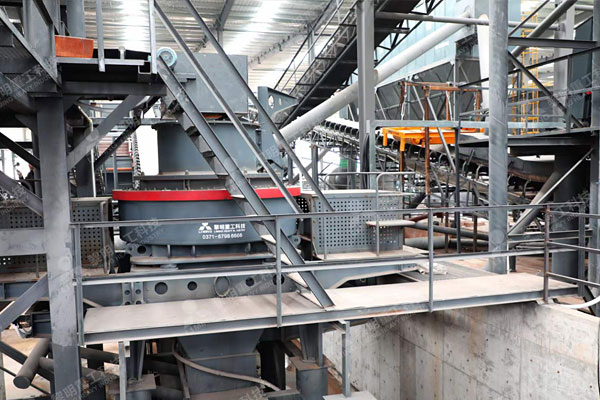Quartz sand, a vital component in various industrial applications, is often mined and processed to produce the fine particles known as quartz sand. To optimize its usability, various crushing methods are employed, one of which is through impact crushers. In this essay, we’ll delve into the significance of impact crushers in the processing of quartz sand, their operational principles, and their impact on industrial processes.
Importance of Quartz Sand:
Quartz sand holds significant importance across industries due to its diverse range of applications. From construction to electronics, quartz sand serves as a foundational material. Its exceptional hardness, chemical inertness, and high melting point render it indispensable in manufacturing processes. Industries such as glassmaking, foundries, ceramics, and even hydraulic fracturing (fracking) rely heavily on quartz sand. This reliance underscores the necessity for efficient processing methods, among which impact crushers play a crucial role.

Understanding Impact Crushers:
Impact crushers are versatile machines designed to crush a variety of materials, including quartz sand. Their operation revolves around a high-speed rotor with wear-resistant tips that accelerates the feed material into the crushing chamber. As the material collides with the rotor and is subsequently thrown against the chamber’s lining, it undergoes fragmentation into smaller particles. This process generates high-speed impacts, effectively reducing the size of the input material.
Advantages of Impact Crushers:
- High Efficiency: Impact crushers are renowned for their high reduction ratios, enabling the production of finer quartz sand particles with fewer stages of crushing.
- Versatility: These crushers can handle a wide range of materials, from soft limestone to hard quartz, making them suitable for diverse industrial applications.
- Uniform Particle Size: The impact mechanism ensures consistent particle size distribution, critical for applications demanding precise specifications.
- Low Maintenance: With fewer moving parts compared to other crushing machines, impact crushers offer lower maintenance requirements, reducing downtime and operational costs.
- Selective Crushing: By adjusting the rotor speed and the gap between the impact plates, operators can control the size and shape of the output material, allowing for selective crushing suited to specific applications.
Applications in Quartz Sand Processing:
- Size Reduction: Impact crushers play a pivotal role in reducing the size of quartz sand mined from quarries or extracted from natural deposits. By breaking down larger chunks into smaller, manageable sizes, they facilitate downstream processing.
- Homogenization: Impact crushers ensure uniformity in particle size distribution, crucial for applications such as glassmaking and ceramics, where consistency is paramount for product quality.
- Shape Enhancement: Through precise control of operating parameters, impact crushers can shape quartz sand particles to meet desired specifications, enhancing their suitability for various applications.
- Aggregate Production: In construction, impact crushers are employed to produce crushed quartz sand for use as aggregate in concrete, asphalt, and road construction, providing strength and durability to the finished structures.
Impact crushers represent a cornerstone in the processing of quartz sand, offering efficient size reduction, uniform particle size distribution, and versatility across a myriad of industrial applications. Their role in enhancing productivity, improving product quality, and reducing operational costs underscores their significance in the quartz sand processing industry. As advancements in technology continue to refine their performance and capabilities, impact crushers will remain indispensable tools for meeting the demands of a rapidly evolving industrial landscape.
